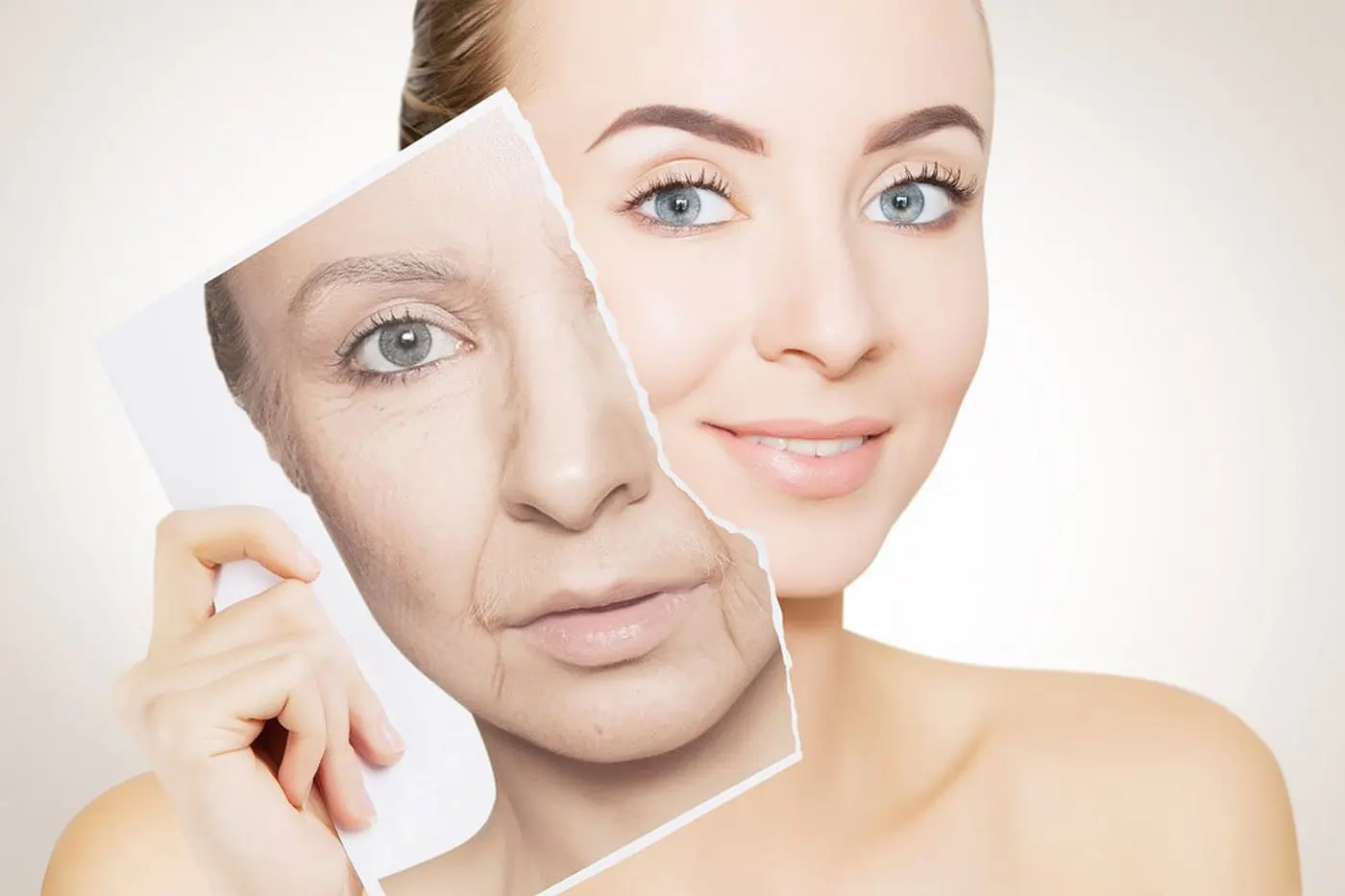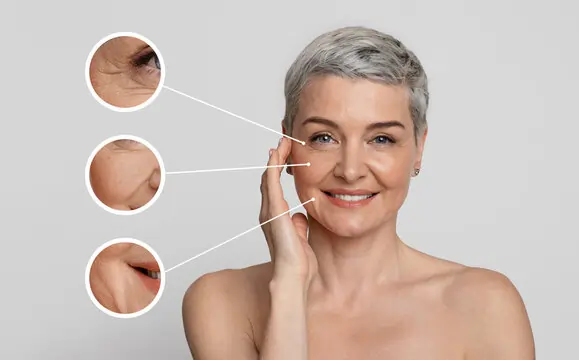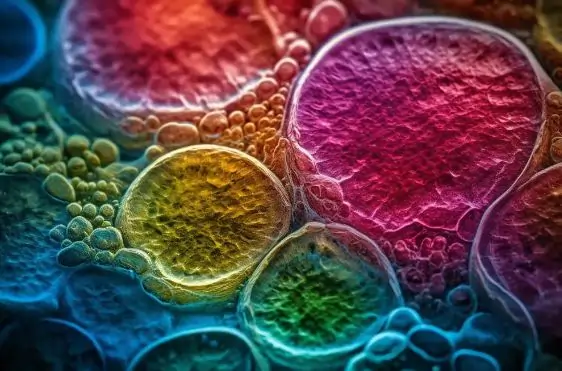Journal
Stem Cell for Anti-Aging
2024-02-16
Anti-aging

The body's metabolism and regeneration processes are slowed down and weakened as we age, and this is a complicated process. It causes both outward and internal symptoms, including joint wear and tear, increased inflammation, fat accumulation, immune system deterioration, dryness, and decrease in elasticity in the skin, and more. Several age-related disorders are brought on by and accompanied by this procedure.
The ability to use stem cells that have been reinjected into the skin to slow down the aging process has made it feasible to preserve and maintain the inherent beauty of our skin. Stem cells possess the ability to regenerate damaged or worn-out cells, and their numbers are known to decline with age. The body can reduce the aging process, enhance health, and potentially lengthen life expectancy with a method centered on stem cell replenishment.
The ability to replenish aged cells by restoring natural collagen and lessening outward indications of aging has been demonstrated by an extensive number of research investigations.
Repairing damaged tissues after an injury or attack is the goal of regenerative medicine as it uses stem cells. Additionally, it presents a chance to stop or decrease skin aging. Therefore, it is a treatment that is both curative and preventive.
How much do you know about aging?
All parts of the human body, including the skin, are susceptible to the effects of natural aging. Aging skin on the face is an ongoing problem for many people, ranging from wrinkles on the forehead to hollows under the eyes. While the aging process varies from individual to person, there are clear indicators that the skin on your face is becoming less elastic and firm. However, it can be uncomfortable to watch oneself age. Observing wrinkles and fine lines may bring about sadness and frustration, regardless of how frequently it is said that being beautiful is more than just skin deep.
The dermis, hypodermis, and epidermis are the three layers that make up the skin. The dermis, or middle layer of skin, is affected by age-related skin changes most of the time. Many of the substances, including hyaluronic acid, collagen, and elastin, that keep skin smooth and firm are found in the dermis. Our skin gets loose at the age of 35 when we begin to lose these substances.
Additionally, your face has subcutaneous fat, a layer of fat beneath the skin that adds definition and volume. Fat pads surrounding the eyelids, cheeks, temples, and chin move downward as the skin lacks collagen, elastin, and other firming substances. Consequently, the facial skin becomes loose and wrinkled, causing the loss of its natural contours.
Overexposure to the Sun, gravity, stress, dryness, smoking, lack of sleep, and sleep position are among the important factors triggering skin changes.
Some skin aging signs:
- The epidermis thins as a result of the basal cell layer of the epidermis slowing down the rate at which new cells are produced. The dermis could thin out. Skin is more prone to wrinkle and crepe as a result of these alterations together.
- For elderly skin, sweat and oil glands are not present as much as in younger skin. As a result, the skin may become more vulnerable to dryness-related issues like irritation and roughness.
- Reduced elastin and collagen, together with skin thinning, cause wrinkles. As a result, specific areas of the face, such as the lips and eyes, are more vulnerable to wrinkles.
- Uneven tone: certain areas of the complexion grow uneven as we age. This might be caused by the function of female hormone levels or by areas of the skin having higher melanin content than others. Skin that seems older than its years may result from this unevenness.

Stem Cell
It is critical to first comprehend the features and functions of stem cells in order to fully understand why they are utilized as a substitute for facial rejuvenation.
The use of stem cells dates back many years, primarily for blood diseases (hematological disorders). It has lately grown in popularity as one of the most sought-after procedures for people looking for aesthetic and cosmetic rejuvenation, such as hair loss and scarring, anti-aging, and cosmetics for the face, cheeks, nose, and breasts. All the information you require to receive stem cell in Seoul, South Korea might be found here in this blog.
The most intriguing type of the billions of cells that comprise the human body are stem cells. They are among the few types of cells in the body that possess the ability to change into any other sort of cell, potentially the precise type that is required, and they can also replace other cells in the body that are worn out or injured.
The majority of the 37 trillion or so cells that constitute the human body are made up of differentiated cells, specific in performing specific functions.
Red blood cells, for instance, are able to deliver oxygen, while muscle fibrocells can reduce their length in reaction to nerve stimulation.
Particular undifferentiated cells called stem cells have been identified in the adult body as well as embryos, fetal organs, the umbilical cord, and amniotic fluid. Stem cells have the ability to replicate endlessly and give rise to any other type of cell that makes up the body, whereas differentiated cells only can give rise to another cell that is similar to itself. A stem cell can develop into any kind of cell in the body because it hasn't yet differentiated.

Anti-Aging Stem Cell
Botulinum toxin injections are typically used to smooth wrinkles and fine lines, and dermal fillers are used to restore volume lost during aging and to improve blood flow to the face providing a more youthful appearance. Stem cells are, nonetheless, among the greatest choices for facial rejuvenation.
With stem cells, fillers and Botulinum toxins are replaced with a more natural option that harnesses the healing power of stem cells produced from our fat, blood, or bone marrow.
Mature mesenchymal stem cells in blood and fat and amniotic fluid and membranes have been shown in numerous studies to stimulate the formation of new blood vessels, contribute to tissue regeneration, and eventually make skin appear younger. Because of this, medical professionals provide stem cell treatments and therapies to reduce wrinkles and enhance the skin's overall tone and texture.
It has been discovered that adipose-derived stem cells (ADSCs), are fairly successful at revitalizing your skin and providing you with the keys to unlocking the fountain of youth. The aging process of skin brought on by exposure to light is known as photoaging. Promising outcomes have been observed in the treatment and prevention of skin photoaging with stem cells.
The formation of epidermal progenitor cells by mesenchymal stem cells is responsible for this impact. Clinical research has demonstrated that even topical treatment of formulations containing stem cells can benefit facial skin in the following ways:
- Enhancement of the texture of the skin
- A noticeable decrease in wrinkles
- Reduction in skin depression
Utilizing your body's natural capacity for self-healing, stem cell represents the newest advancement in anti-aging techniques.
The ability to differentiate into specialized cells combined with the capacity to proliferate into new stem cells are the two traits that distinguish stem cells. Stem cells renew tissues and function as a repair system throughout adulthood. However as we become older, our supply of stem cells starts to run out. Older people who get weak and heal slowly are a clear example of this.
With today's technology, it is possible to collect and replenish these diminishing stem cells. The body's innate capacity for self-regeneration can be strengthened by using autologous stem cells from the individual. This is the least dangerous source of stem cells that is accessible.
An alternative resource is allogenic stem cells, which are normally taken from human umbilical cords. The advantage of allogenic stem cells is that they are younger and have more mitochondria, which allows them to generate more cellular energy.

FAQ
Is it safe to use umbilical cord tissue cells to get stem Cells?
The body's immune system cannot identify the foreign nature of the mesenchymal stem cells produced from the umbilical cord, which makes them more readily absorbed with a zero percent rejection rate. In India, stem cell treatment has been used in a few cases. More efficiently than any other cell type, the umbilical cord-derived cells develop and multiply. Numerous medical facilities and service providers in India offer stem cells.
Is it safe to have Stem Cells in Korea?
In Korea, there are specialized labs that operate to improve the processing of stem cells. These laboratories are equipped with cutting-edge techniques and specialized tools that aid in the unique state of stem cells. Many patients from different countries yearly come to Seoul to get Stem Cell for anti-aging and other reasons.
What is the recommended next step if I am interested in receiving Stem Cells?
Book your online consultation with Docfinderkorea.
Or send us an email at:
inquiry@docfinderkorea.org
It has been shown that individuals in their thirties may exhibit indications of premature aging. Nowadays, you can look younger with a variety of beauty procedures, but each one has a different effect. Treating premature aging with stem cell therapies has become the new standard of care. You may look more refreshed than you have in years with the help of this treatment. In Korea, stem cell is a suitable option for anti-aging concerns.
Back


